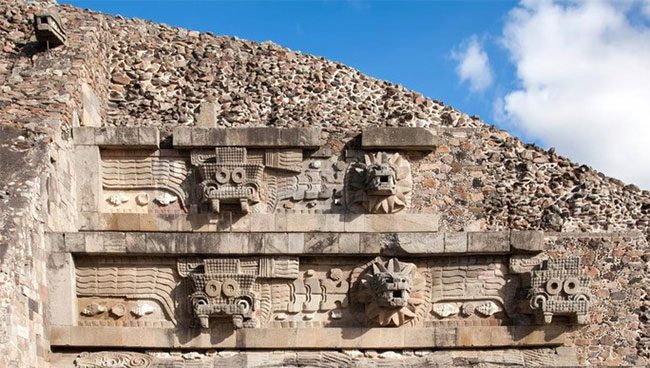According to the National Institute of Anthropology and History (INAH) of Mexico, this is an ancient village of the Teotihuacan people, known for its pottery and high-quality handicrafts.
The discovery of the Teotihuacan village in the Tlatelolco area of Mexico City has brought an extremely valuable treasure to the country, consisting of countless pottery items dating back approximately 1,500 years.
The ruins indicate that the mysterious village existed around the years 450-650 AD. This was a period when the city-state of Teotihuacan reached the peak of its influence in Central America.

A corner of the pyramid showcasing Teotihuacan style – (Illustrative image from ARCHAEOLOGY TRAVEL).
Teotihuacan is a renowned city-state famous for its distinct culture and architecture, respected as an autonomous region by powerful surrounding empires, including the Inca.
In addition to the main urban center featuring pyramids, plazas, roads, and grand houses, Teotihuacan also had satellite towns and villages, including the recently discovered village.
According to Heritage Daily, the first clues about the ancient village emerged in the 1960s, but a recent excavation revealed the true scale of the settlement, including the discovery of three tombs filled with rich burial goods, complex architectural features of the settlement, and an abundance of pottery.
INAH reported that the villagers lived in a self-sufficient manner through hunting and gathering, but also earned income by producing pottery and other high-quality handicrafts, akin to a modern craft village.
Numerous small statues, greenstone artifacts, ceremonial items, flint projectiles, and sculptures have been found alongside the rich treasure of ancient pottery.
Evidence of Aztec occupation in the area was also uncovered during the excavation, identifiable in sediment layers from the 18th, 19th, and 20th centuries.


















































